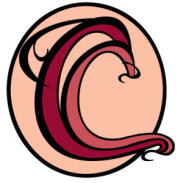Elegant Victorian Table Sets
 |
| Northwood's Leaf Medallion/Regent in amethyst |
 |
| Admiral aka Flora by Beaumont |
The more wealthy families had table sets of cut glass or sterling silver and the upper middle class for the most part used EAPG, Early American Pattern Glass, sometimes referred to as imitation cut glass, for these sets.
EAPG table sets, along with many other pieces, were produced
in an amazing array of patterns and colors by a number of glass companies. Each
of these companies seemed intent on outdoing their competition in terms of the
beauty and elegance of their glassware.
 | |
Left to right - Gillinder's Classic pattern, Northwood's Klondyke in Canary Opalescent,
Northwood's Argonaut Shell/Nautilus in custard
|
 |
Riverside's Empress in green
|
Used at every meal, table sets consisted of a covered sugar bowl, creamer, covered butter and a spooner. Although the names of most of these items are familiar there are some interesting differences between the items we use today and their Victorian counterparts.
 |
| Madora - Arrowhead in Oval |
Let’s start with the covered sugar bowl. Looking at the photograph of the Madora set on the right, one might think that the double handled piece the without the lid was the sugar, but it’s the large covered piece that served this purpose. Why is that? Well it’s not because Victorians used a lot of sugar as it was a very expensive luxury item. The need for a large container stems from the way sugar was processed. One couldn’t just stroll down to the corner grocery store and pick up a 5 lb bag of granulated sugar. Instead sugar came in rock hard conical loafs of 3 or 4 pounds which had to be broken into smaller pieces with a mallet, then cut with sugar-nips into smaller chunks which could be served in the sugar bowl. Quite a lot of work to sweeten your tea!
 |
| Photo by Chris Cope |
Creamers were also larger holding about 4 more ounces than the ones we use today. I suspect that part of the reason was the number of people normally gathered around the table along with the abundance of cream available. And yes, they actually used their creamers for real cream!
Shown on the left is a William and Mary footed creamer in Primrose Pearline made by Davidson. RD #43701 circa 1903.
 |
| Photo by Chris Cope |
On the right is a #101 Rubina Verde Polka Dot Cheese and Cover (more commonly known as a covered butter dish) made by Hobbs Brochunier & Co. circa 1884.
 |
| Photo by Chris Cope |
Instead of laying out a spoon at every place, the spoons would be placed in the spooner for those who wished to use them.
There have been a couple of explanations offered for this practice. It’s possible that some households did not have sufficient spoons to place one at each setting. The other explanation is that the spooner enabled one to display the number of beautiful spoons one had acquired regardless of how many people were at the table. It was also considered to be a sign of hospitality to have spoons at the ready.
Shown here is a Daisy and Button with Crossbar AKA Mikado spooner in canary made by Richards and Hartley circa 1891.
I hope you have enjoyed learning about these highly collectible pieces from the past. They make a beautiful display and who knows, they may inspire you to set an elegant Victorian table at your next dinner party.
 |
| Riverside's Victoria in ruby stained |
Want to learn more about Early American Pattern Glass? Visit http://patternglass.com/ where you can take a class at the Pattern Glass School, visit the bookstore and stroll through the virtual Museum.
 |
| Greentown Cactus in chocolate |
 |
| Northwood's Royal Ivy - Rubina |
Many thanks to the "glassies" who generously shared their photos and knowledge!
All photos and text belong to the copyright owner and may not be used without prior written permission.
Linking to, and sharing of, this blog is welcomed and encouraged.


1 comment:
I always wondered about Spooners. Though the name says it all, I still didn't understand why they used them or why they didn't have knifers and forkers, etc. Thanks for clearing that up for me!!
Post a Comment